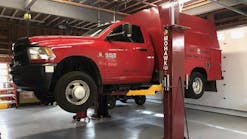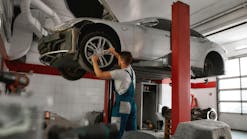Leadership means something different to everyone, and everyone responds differently to various leadership techniques. “Bossing” and “managing” are two very different concepts and being able to negotiate the middle ground between them is a skill as important as any you’ll learn in your career.
My personal leadership style has changed drastically over the years. Just like anything else, people adapt and evolve over time and I’ve gone from being an authoritative figure to much more affiliative and diplomatic. It wasn’t easy and it didn’t happen overnight but being able to see how people react to different styles has given me a better understanding of what good leadership is all about – getting the most out of your team and doing what’s best for your shop.
You’ve heard the expression “leaders are born,” and that’s true to a certain extent, but leaders are also developed – by enhancing an employee’s natural abilities and setting them up to succeed by unlocking their potential to lead. To do this you need to (a) know what to look for when you’re hiring someone, (b) train them properly and (c) establish good internal measurement systems that set people up to become better employees and, ultimately, quality leaders.
When you’re looking for employees who can help take your shop to the next level and provide good direction and leadership for your business, it starts before they even set foot in the door – it starts when you’re still in the hiring process.
Be dilligent
The one ingredient that does go into every great leader (and team member for that matter) is character. Character is something you either have or you don’t – and it’s not something that can be taught.
As such, when you’re looking to hire someone who you can build into a leader at your shop, character is the biggest thing you’re looking for in a candidate.
A major mistake I see a lot of shop owners making nowadays is hiring what I call “basketball employees.” These employees bounce around from job to job, never really staying in one place long enough to make a difference or learn anything that will help them advance to the next level in their career. This is, usually, a sign of poor character.
We all know all too well that we’re dealing with a serious labor shortage in our industry but that’s no excuse to hire substandard employees. I could go on and on about why there are fewer and fewer people entering the auto repair field nowadays but, at the end of the day, we can’t let that interfere with the critical matter at hand – you still need to have quality people on your team if you want to run a quality business.
Back when I was the on-site manager at Keller Bros. Auto Repair in Littleton, Colorado, we’d only interview a handful of candidates out of every 100 resumes we received and from there, we’d only make an offer to a single individual. In today’s market, I’m not sure any of us see 100 applicants in a year. Obviously not every market has the luxury of being so picky, so the temptation to hire someone quickly is even greater today but should be avoided at all costs.
You should always use a set of written questions when conducting initial job interviews – you need to have consistency in what you’re asking the various applicants you’re sorting through and the more you’re able to learn the better. In addition to learning about their work history and such, you’re also on the lookout for red flags. If every job they left was due to poor management – this should be huge red flag.
If they waver when you ask them about having an up-to-date ASE certification? Red flag. If they’re immediately asking about recreational drug use policies? Red flag. If they’re reluctant to explain why they left their previous job? Red flag.
The more interviews you do the better you’ll get at intuitively picking up on who will be a motivated, hard-working staff member and who will be a liability.
Be meticulous
Once you’ve hired a new employee, you should spend as much time as possible training them during their first couple of weeks on the job. Training is the best way to bridge the gap between the skills an employee has and the personality traits you felt might make them a good leader during the interview phase.
A new employee needs to learn both what and why you do things the way you do. People aren’t pets – you can’t just tell them to get off the furniture or to stop barking. You need to explain the reasons why your shop does things a certain way, especially if they’re veterans of other shops and have picked up some poor habits over the years.
For example, at our shop, we do a thorough inspection of every car we service no matter how small the repair job might be. The reason? If that customer gets in an accident after leaving our shop, we could end up being proven liable – it’s been proven in the courts on countless occasions.
Conveying things like this to your new hires is imperative if you want them to be motivated team players and develop into leaders moving forward.
Be committed to the process
In addition to having your policies and procedures outlined and explained meticulously, you need to establish a culture of employee empowerment that new hires are able to buy into once they’ve been trained properly.
Empowering your employees starts with establishing a dynamic performance measurement system. Measuring productivity helps you retain good employees, plain and simple.
Imagine playing a game of football where you can’t see the field and don’t know the score. You probably wouldn’t play, would you?
Knowing how they’re doing versus their peers instills a healthy sense of competition within your shop.
Just like a quarterback knows how many touchdowns he’s thrown for and a cornerback knows how many interceptions he’s snagged, your employees need to know what their stats are and how they stack up against the competition. Ticket average, repair times, comeback rates, etc. – everything needs to be tracked and shared in order for motivation to be optimized in your shop.
In my experience, good workers want to be held accountable and a shop-wide measurement system is the best way to achieve a level of accountability that effectively motivates workers and builds the leadership skills necessary to know how to win the profit game – week-in, week-out!
Give your people these tools and they’ll be in position to do great things more often than not – and you’ll be in position to hand off more responsibility to the effective and productive leaders your shop has developed.


